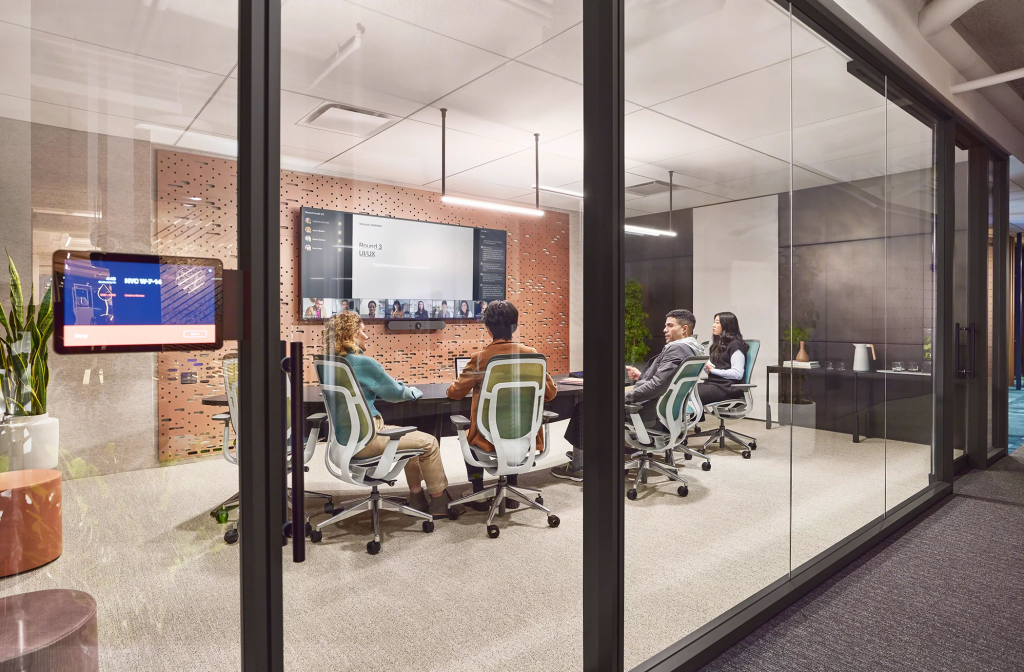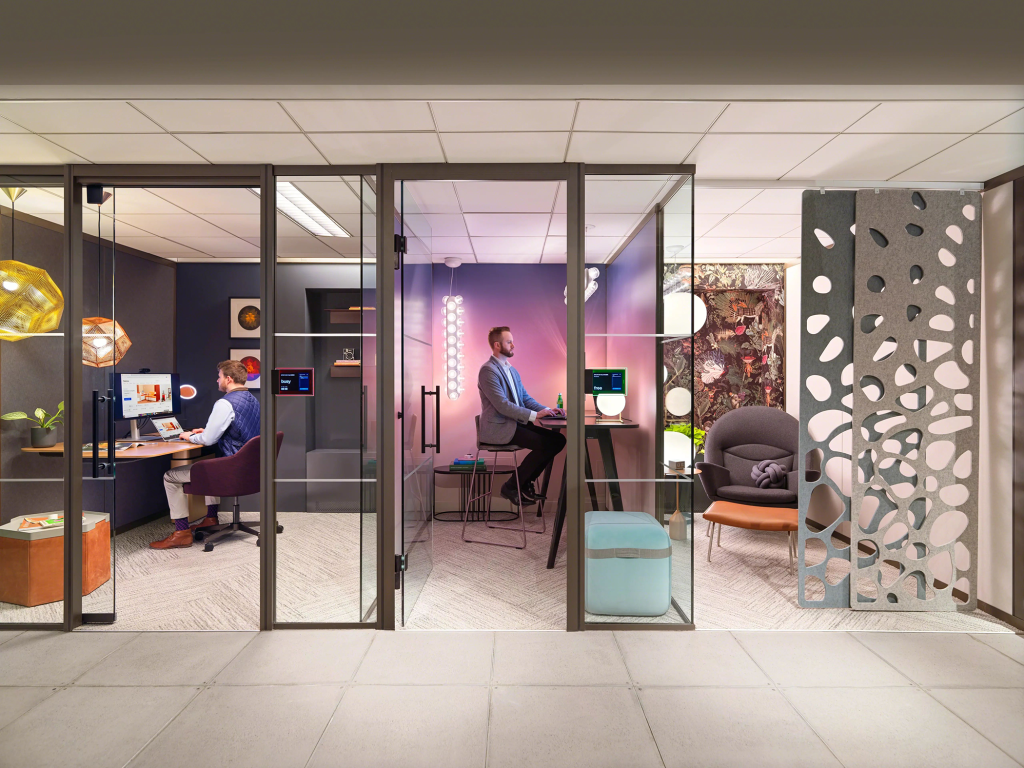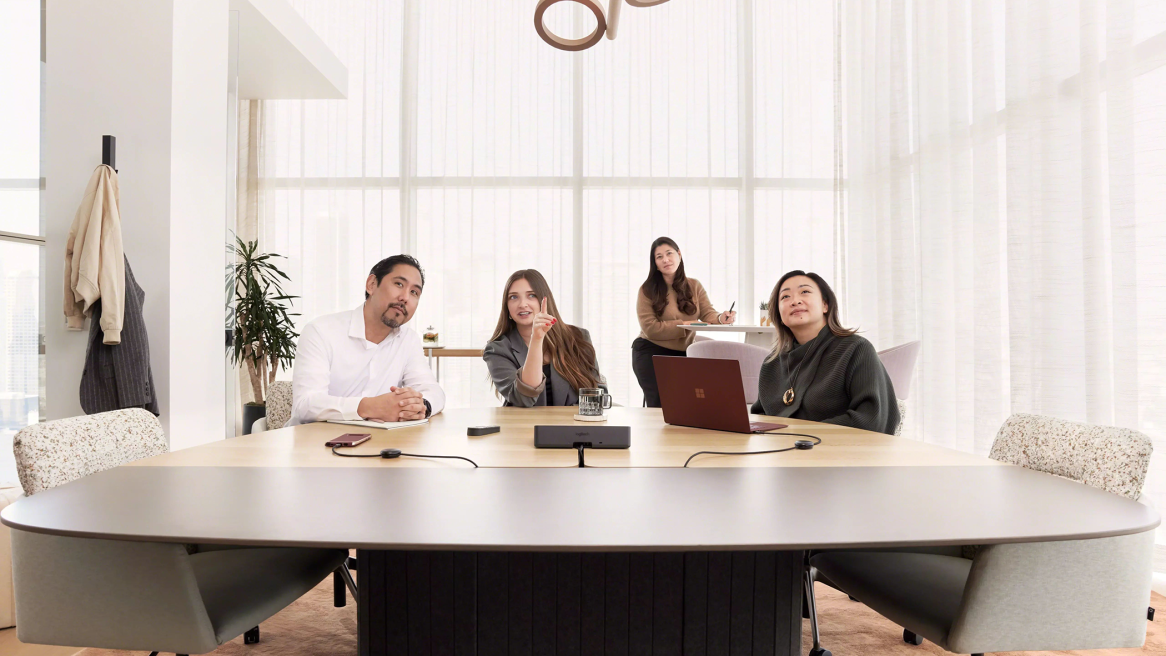High-Stakes Business Transformation
Better collaboration spaces help teams deliver results faster
Solving high-stakes problems is complex — in many cases literally transforming how business happens. The work is different from just a few years ago, not only because teams have to make decisions more quickly and deliver results fast, but they’re often highly distributed and include external partners, all of which can further complicate an already complicated project.
Business transformation initiatives are accelerating a shift in how teams collaborate at a growing number of organizations, especially as AI promises to upend business models. “Leading companies are moving from ‘wait and see’ to ‘it’s time to move,’” says Nina Desrocher, partner, IBM Consulting. “Cross-functional teams need to work together – closely and intentionally – for the highest business transformation returns. Each day, we’re placing bets on the future and dissecting, analyzing and developing new work patterns to improve business capabilities.”
Chief executives are making decisions faster than ever in a world that has moved beyond looking solely at shareholder value.
IBM Institute for Business Value
Companies undertaking business transformation make major investments, in both their own employees’ time and engaging consultants, so any delay comes at a cost. Large hybrid teams need to explore options, make quick decisions, and deploy solutions at a rapid pace, but if their technology is cumbersome, spaces are hard to navigate or the two aren’t well integrated, it’s not only frustrating, but wastes time and money.
While collaboration has changed, most workspaces have not. Fixed furniture and bad sightlines makes it harder for everyone to be seen and heard. Engagement suffers with limited table capacity and a lack of co-creation tools. Old technology, no video or no way to reserve rooms or desks makes it tough to get a meeting up and running quickly. Employees today have heightened expectations – they want technology available at their fingertips, easy to use for collaboration or to stay focused and consistent across spaces.
Easy-to-Use Collaboration Spaces

When every hour counts – whether an interaction, a meeting or focus time – spaces should enable people’s work, not act as a barrier. Steelcase designers have been working with leading IT partners like Microsoft, Logitech, Crestron and Zoom for years to create better spaces for distributed work. Their collaboration has produced a new, prototype team neighborhood at the Steelcase Global Business Center in Grand Rapids, Mich., that braids the physical and digital. Smart technology combines with specially-designed furniture to create a high-performing space for Steelcase employees working alongside IBM and other partners, including PwC and KPMG, on a series of major business transformation projects.
”We worked with leading organizations on complex projects like this all over the world. It makes such a difference when how we work and how the spaces we use are considered as part of the program,” says Desrocher. “When we’re onsite, we’re more effective in how we use time. Those offsite can engage and participate better, so that nobody is left out or behind.”
Steve Miller, Steelcase CIO, says the space has become a draw, bringing people into the office to do work better than they could at home. “Everything is designed very deliberately. People are spending less time battling technology and are finding real satisfaction making progress together,” says Miller.
To create the hybrid neighborhood supporting high-performing teams, designers drew on experiences and places people already find easy to use. Wayfinding is obvious. People know where to find information, check in, connect to Wi-Fi and the best spots to feel moments of delight — like a simple check-in when it’s late at night. Moments of delight in the office come in lots of forms. Ease of use, like being able to join a meeting with one button, is especially important when partners need to come and go frequently.
Designers focused on how a new neighborhood can help individuals and teams make more progress, faster.
For individuals: A digital map at the entrance, and a room and desk reservation system means people always know which spaces are free, can easily book one, and find where to go. Microsoft Teams Rooms use Logitech One-Touch Join technology that lets people walk into a room and boot up the space right away. And the neighborhood layout lets people quickly shift from individual or pair-based work to group work.
For teams: New room layouts with tiered seating and round or arced table shapes cue people where to sit so everyone — in-person or remote — can see and be seen, and hear and be heard. Logitech’s cameras with intelligent multi-participant framing gives everyone their own virtual presence. The Logitech Scribe camera is especially valuable during meetings because it seamlessly works with the Microsoft Teams Room to let remote team members see whiteboard content. One team member said, “You don’t expect it to be that easy.” And Microsoft’s new Surface Hub rotates from landscape to portrait to create a more engaging way to collaborate.
“We’ve always focused on designing technology that is intuitive,” says Sudeep Trivedi, Logitech head of Video Collaboration Alliances and Go-To-Market. “But by working with Steelcase and other partners to think about how the entire space works together with the hardware and the software, we’re able to create more personal experiences no matter what side of the camera you’re on.”
Designing Better Spaces for Business Transformation

Steelcase designers, in collaboration with technology leaders from Microsoft, Logitech and Crestron, found these seven insights were essential when designing team neighborhoods for business transformation – or any collaboration today:
- Design space, furniture + technology together: Know what technology you’re using and design the space to maximize eye-to-eye and eye-to-content connections. Also, consider the location and types of microphones in use. A meeting with bad audio is a bad meeting.
- Create a fluid set of spaces: Ensure people can move from individual to teamwork and back again while staying in flow. It should be easy to disconnect, move to the next space most conducive to work they’re doing and then reconnect.
- Merge participation and protocol: For example, video calls in the open are allowed when verbal participation is minimal to reduce disruption nearby (headphones required).
- Promote impromptu exchanges: Provide huddle rooms for two-to-three people with integrated displays and content-sharing tools for quickly sharing information. Steelcase data shows huddle rooms were booked ahead of time 50% and used on demand the other 50%.
- Display persistent information: Give each team a place for lightweight and mobile information boards. When it’s time to brainstorm or problem solve, just bring the boards with you.
- Encourage co-location: Unassigned, bookable spaces create the flexibility needed for visiting partners or cross-functional team members to co-locate, swap ideas and build a more dynamic and inclusive environment.
- Foster larger formal + informal gatherings: An open meeting area and a nearby social cafe space can host larger gatherings. Both areas are versatile and can flex based on how many people are in the office.
Business transformation projects don’t last forever, but designers made sure the spaces are ready for what’s next. Ongoing measurement and feedback feeds continuous improvement to support teams as technology or project needs change. “These spaces can easily adapt because they are designed to blend technology and the physical environment seamlessly. Most collaboration needs that kind of intentionality,” says Jenny Carroll, Steelcase principal designer.


